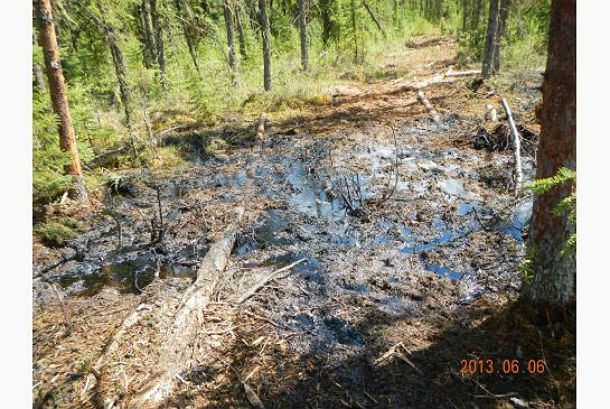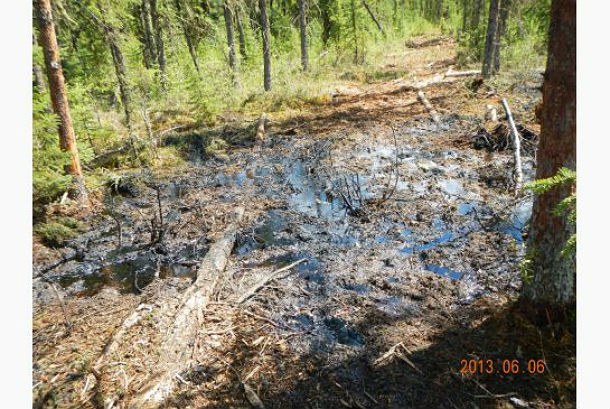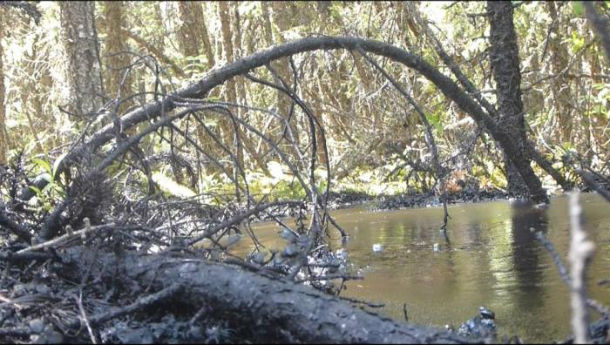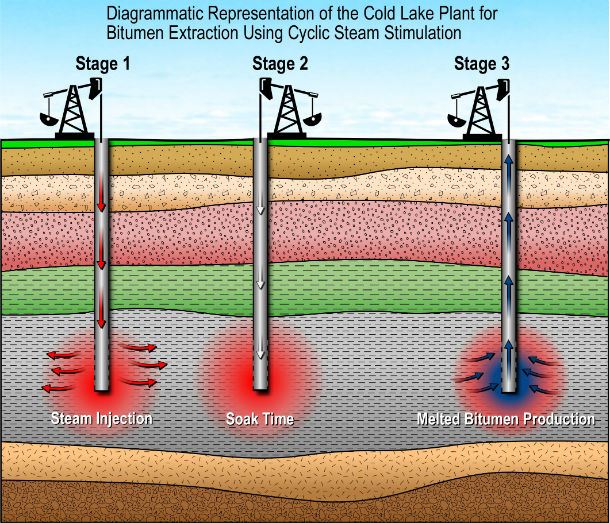Environmental disaster in Canada – Primrose oilsands site in Alberta unable to stop oil leaking for over nine weeks

Canadian Natural Resources Ltd. (CNR) operates the Primrose oilsands facility northeast of Edmonton where four ongoing underground oil blowouts have contaminated forest, muskeg and a lake and have already killed dozens animals. The sites are located in a remote area which has restricted access to the public. Alberta's Oil Sands is the third-largest crude oil reserve in the world, next to Saudi Arabia and Venezuela. Alberta government and the company hasn't yet officially confirmed the cause of the blowout, the amount of spilled material, wildlife impacts, water-quality monitoring or a plan to stop the spill.

Image provided by a government scientist shows the site of an oil spill in Cold Lake, Alberta
The blowout from Primrose tar-sands drilling operation was not revealed to the public until an anonymous government scientist leaked it to the press. According to a Mother Jones article, the spill — which has released at least 4,500 barrels of tar-sands oil — was reported to have started on May 21, 2013. Cleanup started in late May, and so far some 26,000 barrels of bitumen mixed with surface water have been removed, including more than 4,500 barrels of bitumen.
"Everybody [at the company and in government] is freaking out about this. We don't understand what happened. Nobody really understands how to stop it from leaking, or if they do, they haven't put the measures in place." The anonymous scientist who broke the story to the Canadian media

Photo from CNRL shows oil seeping to the surface from underground. (Credit CNRL/Emma Pullman)
The bitumen is a natural, tar-like mixture of hydrocarbons, that when heated has a consistency of molasses. In its natural state, bitumen will not flow to a wellbore. According to an unnamed expert, neither government or industry are able to stop the spills. Oil spills at an oil sands operation in Cold Lake, Alberta have already been going on for weeks with no end in sight.
According to CNR, the presence of bitumen emulsion on the surface does not pose a health or human safety risk. However, official at the Alberta Energy Regulator (AER) has stated that 60,000 pounds of contaminated vegetation have been removed and dozens of animals have died. It is also possible that the bitumen has come in contact with the water table.
Another release of oil occurred in 2009, and after an investigation and apparent changes to steam-injection operations, government regulators permitted Canadian Natural Resources Ltd. to resume operations.

This graphic shows cyclic steam stimulation (CSS) extraction method used at Cold Lake plant (Credit: Alberta Geological Survey)
Unlike more conventional tar sands mining operations, Primrose oilsands uses a newer, more “eco-friendly” technology called cyclic steam stimulation (CSS) that forces pressurized steam deep underground to loosen the thick, bitumen “tar’ and bring it to the surface. However, this process also generates more CO2 than other methods. Canada's largest bitumen recovery project uses CSS at Cold Lake. Steam injected down the wellbore into the reservoir heats the bitumen, followed by a soak time, and then the same wellbore is used to pump up fluids. At Cold Lake, about 3200 wells are currently operating from multiple pads, with two above ground pipelines, one to deliver steam and the other to transport fluids back to the processing plant.
Tar Sands Well Blowout Raises Questions About Alberta's Regulatory Oversight on the NRDC blog Switchboard
Featured image: Image provided by a government scientist shows the site of an oil spill in Cold Lake, Alberta

All of Northern Alberta is becoming a wasteland. Between the fracking for gas to run the oil sands operations and the oil sands operations themselves they are destroying the complete hydrology system and the Mackenzie River basin. The only way to slow down this destruction is to stop the pipelines from being built. In BC we are doing all we can to stop the Northern Gateway Pipeline from going through, but the oil companies own all the politicians so its an uphill battle.
Humans are far too stupid to be trying this.